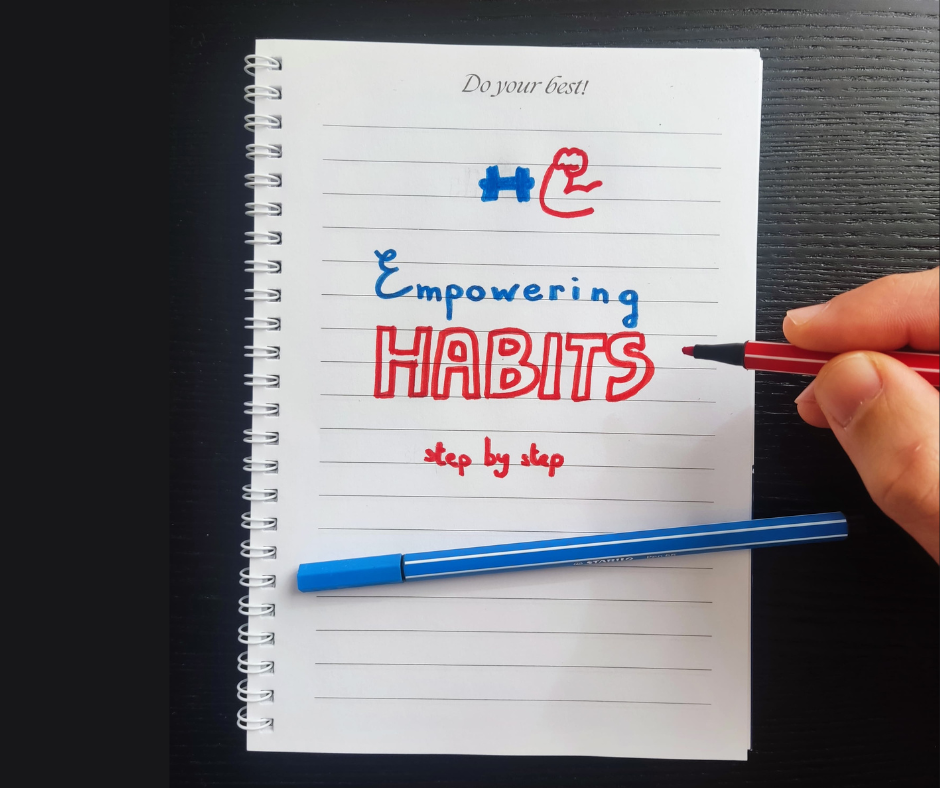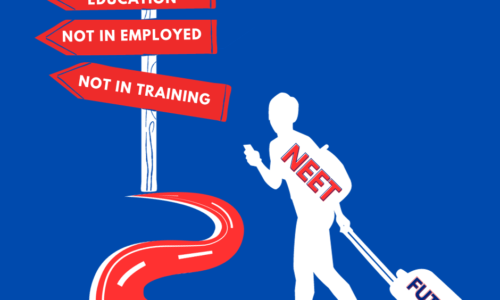
Empowering Habits: step by step
- Inglese, personal growth
- EmpoweringHabits, English, englishteacher, goals, habits, learnenglish, motivation, nolimits, ppowerfulhabits, succeshabits
- 12 Febbraio 2024
A little preamble.
In this series of articles on learning English to the best of your ability, we won’t approach the subject from a didactic point of view, nor will I tell you the same tips everyone else knows and suggests. We will create empowering habits that will stay with you for life, following a pattern that works in any field.
How to create powerful habits and learn English at its best
Let’s begin by sharing with you the four types of learners I have encountered most often in my career:
1. the motivated: they know their goal and are willing to do whatever it takes to achieve it, including coming to class more than once a week;
2. the prepared: they have a good knowledge of the language, and their goal is to pass a final exam;
3. the obliged: usually by parents or, in the case of an adult, because of work, they know their goal but not so much English;
4. the unmotivated: they believe they have no aptitude for or enjoyment of learning the language.
The distinction is not always clear, but when I ask which group has a better chance of learning, they say the first or second. Their answer is wrong, however, and to prove it I will destroy all your beliefs to help you create empowering habits (patterns) that will enable you to get the most out of learning.
Your opinion of yourself is the biggest obstacle
I don’t incline. I wouldn’t say I like it. I will never be as good as a native speaker. English people don’t make themselves understood when they want to. You have to start early. You can’t learn without a native teacher. You can’t learn without going abroad.
These are some of the phrases I have heard countless times during my career, first as a student and later as a teacher. However, having started this journey at 17 (too late, according to conventional wisdom), I decided not to listen to what I call the naysayers, people who project their limitations onto others.
This negative conditioning changes how we figure ourselves and limits our potential. The next step is exclaiming ‘This is who I am’, the cornerstone of any positive change.
And if I have long been unable to give an adequate answer when asked how I learned English, it is because I have placed extreme importance on two factors, passion, and purpose, at the expense of empowering habits.
Looking back, however, I realized that I developed a passion and set my goal after I started the journey. In future articles, we will look at many of these aspects in more detail, but for now remember that English is the journey, not the destination.
Create a winning image
Before we reveal what habits we can incorporate into our daily routine, we need to ask ourselves the right question, which is not what I want to achieve or how I want to achieve it, but who I want to become.
Years ago, after being humiliated by my teacher, I imagined how great it would be to speak fluently. In that moment I created a winning image of myself that I chased for years until I became fluent. There were moments of discouragement or defeat, but the image I had formed in my mind was so vivid that I only had to roll up my sleeves and get back on track. And when I was close to my goal, all I had to do was raise the bar to keep improving. If this seems tiring, remember that we cannot stand still. We move forward, or backward because the world has moved on. And catching up is more tiring than taking action.
Habits shape our identity
Very often we bind habits to a goal. There is no such a false and limiting belief. Habits are about how we want to be, not what we want to achieve. When I created the image of a fluent me, it wasn’t because I wanted to do well at school. Given my level at the time and the teacher’s belief that I was worth a certain grade, the best I could aspire to was to improve the grade – which I did. The key, then, is not to set goals – which, as we shall see, are necessary to find the right direction – but to create empowering habits that lead us to achieve them.
Focusing on the goal is limiting
This is a difficult concept to accept because the driving force for change is the desire to improve certain aspects of our lives that we identify with the goal. But in doing so, we focus only on the short term, ignoring the intermediate steps that make a difference in the long term and that may not seem relevant at the moment. Then, when the results are not immediately visible, we revert to bad habits. And if constant improvement brings us closer to the goal, the opposite will inevitably take us further away.
The next article will discuss how habits work and how to program them to our advantage. Until then,
See ya, mates.
Scroll down for the Italian version
Abitudini potenzianti per imparare l’inglese
Come creare delle abitudini potenzianti e imparare l’inglese al meglio: Step by step
Una piccola premessa. In questa serie di articoli su come imparare l’inglese al meglio delle vostre potenzialità, non affronteremo la questione dal punto di vista didattico, né mi limiterò a dirvi gli stessi suggerimenti che chiunque conosce e propone. Quello che andremo a fare è creare abitudini potenzianti che vi accompagnino per la vita, secondo uno schema che è valido in ogni ambito.
Per iniziare, voglio condividere con voi i quattro tipi di studenti che ho incontrato più spesso in carriera:
1. il motivato: conosce l’obiettivo ed è disposto a tutto pur di ottenerlo, compreso venire a lezione più di una volta a settimana;
2. il preparato: ha una buona conoscenza della lingua e svolge le lezioni in funzione di un esame finale;
3. l’obbligato: solitamente dai genitori, o nel caso di un adulto in funzione del lavoro, conosce l’obiettivo ma non altrettanto l’inglese;
4. il demotivato: è convinto di non essere portato, o di non avere piacere nello studio della lingua.
La distinzione tra i tipi non è sempre netta, ma quando chiedo chi ha più possibilità di imparare, tutti rispondono chi fa parte del primo o del secondo gruppo. La risposta, però, è sbagliata, e per dimostrarvelo distruggerò tutte le vostre credenze per aiutarvi a creare abitudini potenzianti (pattern), che vi permetteranno di ottenere il meglio dallo studio.
L’opinione che hai di te è l’ostacolo più grande
Non sono portato. Non mi piace. Non sarò mai bravo come un madrelingua. Gli inglesi se vogliono non si fanno capire. Bisogna iniziare da piccoli. Non puoi imparare senza un insegnante madrelingua. Non puoi imparare senza andare all’estero.
Queste sono alcune delle frasi che ho sentito innumerevoli volte durante la mia carriera da studente prima, e da insegnante dopo. Solo che, avendo iniziato questo percorso a 17 anni (troppo tardi, secondo la credenza comune), ho deciso di non dare ascolto a quelli che io chiamo i naysayers, ovvero le persone che proiettano i loro limiti sugli altri.
Questo condizionamento negativo finisce con il modificare l’immagine che abbiamo di noi, e limitare le nostre potenzialità. Il passo successivo è esclamare “io sono così”, la pietra tombale di ogni cambiamento positivo.
E se io stesso, per molto tempo, non sono stato in grado di dare una risposta adeguata quando mi chiedevano come avessi fatto a imparare l’inglese, è perché ho attribuito un’estrema importanza a due fattori, passione e obiettivo, a scapito delle abitudini potenzianti.
Guardando al mio passato di studente, però, mi sono reso conto di aver sviluppato la passione e aver capito l’obiettivo dopo aver iniziato il percorso. Nei prossimi articoli analizzeremo molti di questi aspetti più a fondo, per il momento ricordate che l’inglese è il percorso, non la destinazione.
Crea un’immagine vincente
Prima di svelare quali siano le abitudini da inserire all’interno di una routine giornaliera, dobbiamo porci la giusta domanda, che non è cosa voglio ottenere, o come, ma chi voglio diventare.
Anni fa, dopo essere stato umiliato dalla professoressa / bulla di turno, ho immaginato quanto sarebbe stato bello essere un fluent speaker. In quel momento e senza rendermi conto ho creato un’immagine di me vincente, che ho rincorso per anni, fino a diventare un proficient speaker. Questo non vuol dire che non ci siano stati momenti di sconforto, o sconfitte, ma l’immagine che avevo formato nella mia testa era così vivida che bastava rimboccarmi di nuovo le maniche per rimettermi in carreggiata. E quando ero prossimo a ottenere il risultato prefissato, bastava alzare l’asticella per continuare a migliorare. Se questo modo di fare sembra stancante, ricordate che nella vita non si può rimanere fermi. O andiamo avanti, o indietro, perché nel frattempo il mondo intorno a noi è andato avanti. E recuperare è più stancante di agire.
Le abitudini formano la nostra identità
Molto spesso leghiamo le abitudini a un obiettivo. Non c’è convinzione più sbagliata e limitante. Le abitudini riguardano cosa vogliamo diventare, non cosa vogliamo ottenere. Quando ho formato l’immagine di un me in grado di parlare fluent, non l’ho fatto perché volessi andare bene a scuola. Dato il mio livello in quel momento, e la convinzione della professoressa che valessi un determinato voto, il massimo a cui avrei potuto aspirare era migliorare la valutazione – cosa che è avvenuta. La chiave, allora, non è fissare degli obiettivi – che, come vedremo, sono necessari a individuare la giusta direzione – ma creare abitudini potenzianti che ci portino a ottenerli.
Concentrarsi sull’obiettivo è limitante
È un concetto difficile da accettare, perché il motore del cambiamento è il desiderio di migliorare determinati aspetti della nostra vita, che identifichiamo con l’obiettivo. In questo modo, però, ci concentriamo solo sul breve periodo, ignorando gli step intermedi che fanno la differenza nel lungo, e che al momento non sembrano rilevanti. Poi, quando i risultati non sono subito visibili, riprendiamo le cattive abitudini. E se un miglioramento costante avvicina all’obiettivo, l’opposto allontana inesorabilmente.
Nel prossimo articolo parleremo di come funzionano le abitudini e come possiamo programmarle a nostro vantaggio. Fino a quel momento,
See ya Mates.





